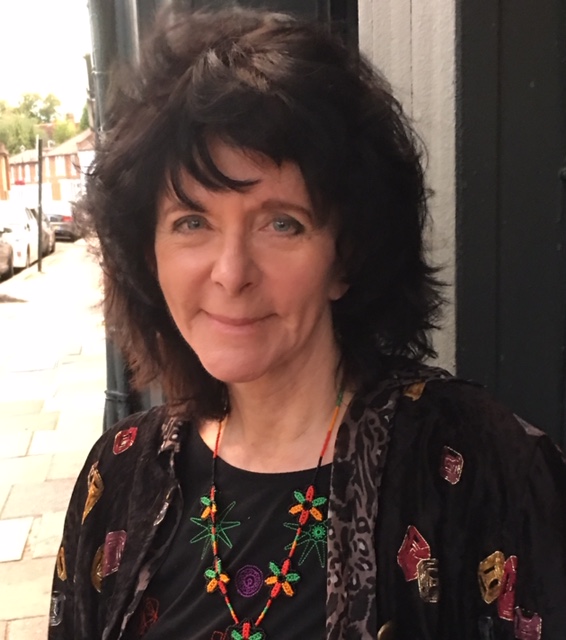
Ruth Padel
“Imagery of the Elsewhere,” 1974-2004
From The “Quote –UnQuote” Newsletter, vol. 14. No. 1 January 2005
By Nigel Rees
“FAR AWAY IS CLOSE AT HAND IN IMAGES OF ELSEWHERE”
For a number of years in the seventies, train passengers going in and out of Paddington Station in London were beguiled or puzzled by words painted up at the side of the track: “Far away is close at hand in images of elsewhere”. This elegant graffito because almost famous – not least on 22nd June 1978, when Michael Wharton, the “Peter Smple” humorous columnist on The Daily Telegraph, diccussed the work of the unknown artist as if he were an Old Master.
“Dr Anita Maclean-Gropius’s monumental catalogue raisonné, “The Master of Paddintgon” (Viper and Bugloss £65), published last year, dealt in detail with all the works confidently or tentatively attributed to the Master and his School. It was, of course, savaged in a long review by Dr. J.S. Hate, Keeper of Graffiti at the Victoria and Slbert Museum, in the British Joural of Graffitology….“
I myself also mentioned the piece in my first collection, Graffiti Lives, OK (1979), and got round to photographing it in May 1981 just as builders were demolishing the wall on which it was painted. It was pointed out to me that the first six words had apparently been taken from the Robert Graves poem, “Song of Contrariety” (1923):
Far away is close at hand
Close joined is far away,
Love shall come at your command
Yet will not stay.
I mentioned some of this on a recent edition o the radio show, and was than intrigued to be contacted by “Helen” who claimed that the “Master of Paddington” was, in fact, two people, her husband Dave and his brother Geoff. They painted it, she said, “one Christmas Eve (when there were no trains) in probably 1974 or thereabouts”. It was placed to be visible on the Oxford line, as both Dave and Helen were Oxford graduates.
Helen confirmed the Graves allusion in the first six words but fascinatingly suggested that the last four were written by the poet Ruth Padel, who, as it happened, had been at Oxford with Dave and Helen.
What was it? I contacted Ruth Padel and asked for her assistance. At first she could only think that £”elsewhere was a very important word for her. The first poet whose work she learned a lot of when young was Tennyson, for whom also the words “far, far away” always had, he said, a strange resonance. Her own very first publication, she said, was a pamphlet of poems called Alibi (1985): and alibi, of course, means “elsewhere” in Latin.
But then light dawned. Ruth remembered something she had published much earlier as a classics graduate student: a scholarly article entitled “Imagery of the Elsewhere: Two Choral Odes of Euripides”, in Classical Quarterly December 1974.
“Yes,” said Dave, “that was it. I don’t think I ever read the article, but it was a great title. It was lying on our kitchen table while Geoff and I were discussing what were were going to write on the wall.”
“Mmm,” said Ruth. “The CQ gave me loads of offprints, I can remember the Courier print: my name, and Euripides’s, on this pale blue cover – my first publication! I didn’t know what to do with them all. So I gave one to Dave.”
Dave read classics at University College while Ruth did the same at Lady Margaret Hall, in the same year as Helen, reading medicine. Then Dave went on to do a B. Phil. in philosophy as Ruth was doing her PhD in Greek.
In February 2005, in Ruth’s kitchen this time, Nigel Rees reunited Helen, Dave and Geoff with Ruth Padel. It turned out that the resonance of that graffito, and the “imagery of elsewhere”, had got everywhere. When Geoff’s son went to college he shared rooms with a girl called Shovel whose father always wrote on the back of envelopes to the letters he sent her, these same words: “Far away is close at hand in images of elsewhere.”
“He always puts that,” she said. “I don’t know why.”
And in 1992, in their song “Godspeed,” even Catatonia quoted the words in a refrain, “Paradise is close at hand in images of elsewhere….”
Read Valerie Grove’s account in the Times of this story and reunion reunion in the Times, Weekend section, April 16th 2005.
